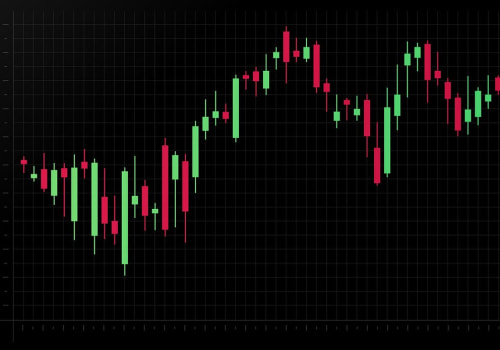Price action trading strategies are a great way to take advantage of the ever-changing Forex market. By taking the time to analyze the price action of a currency pair, traders can get a better understanding of the direction of the market and make better trading decisions. With price action trading strategies, traders can learn how to identify potential support and resistance levels, determine when to enter or exit a trade, and spot potential breakouts and reversals. This article will provide an overview of price action trading strategies and discuss some of the best techniques for Forex traders. Price action trading strategies can be used on any timeframe, from the long-term charts to the short-term intraday charts.
By using price action analysis, traders can identify key levels of support and resistance which can be used as entry and exit points. Additionally, traders can use price action trading strategies to identify potential breakouts or reversals in the market. Finally, these strategies can also be used to identify trends and spot potential reversals. In this article, we will discuss some of the most popular price action trading strategies used by Forex traders. We will discuss how to identify potential support and resistance levels, as well as how to spot breakouts and reversals.
Additionally, we will discuss some of the best techniques for identifying trends and spotting reversals. Lastly, we will discuss some tips on using price action trading strategies effectively.
Price Action Trading Strategies (PATS)
are based on the analysis of the price movement of a security. By understanding how prices move in the short and long term, traders can better assess entry and exit points, identify potential areas of support and resistance, and develop strategies to capitalize on them. This article covers the basics of price action trading and counter-trend strategies for forex traders. The first step in developing a successful PATS is to identify the underlying trend of a security.By understanding the current trend, traders can better assess their entry and exit points. Once the trend has been identified, traders can then look for specific patterns in the price action to signal a potential trade. Common patterns include head and shoulders, double tops and bottoms, and flag patterns. These patterns can provide insight into potential reversals in the market or confirm the current trend. In addition to identifying trends, PATS also involve the use of technical indicators to help identify potential entry and exit points.
Technical indicators such as moving averages, relative strength index (RSI), stochastic oscillator, and Bollinger Bands can all be used to help identify potential entry and exit points. For example, when the RSI is above 70 it may be an indication that a security is overbought and a trader may want to exit their position. Counter-trend strategies are designed to capitalize on potential reversals in the market. These strategies involve taking a position against the underlying trend. Common counter-trend strategies include buying at support levels or selling at resistance levels.
Traders should always use caution when implementing counter-trend strategies as they can be risky. Finally, traders should always use risk management when trading. Risk management involves setting stop loss orders, limiting leverage, and using proper position sizing. By following these risk management principles, traders can minimize their losses while still taking advantage of potential trading opportunities.
Using Technical Indicators
Technical indicators can be extremely helpful in identifying potential entry and exit points for price action traders. Many traders look at the combination of several indicators to form a more comprehensive view of the price action.This helps them to decide when to open and close a trade. For example, traders might use a combination of trendlines, moving averages, and support and resistance levels to identify potential entry points. Similarly, they might use a combination of candlestick patterns, momentum indicators, and technical divergences to identify potential exit points. By utilizing a variety of technical indicators, traders can get a better idea of where the market might be heading in the short-term and long-term.
This allows them to make informed decisions about when to enter and exit their trades.
Counter-Trend Strategies
Counter-trend strategies are based on the assumption that a market that has been trending in one direction is likely to reverse and move in the opposite direction. Traders can capitalize on these potential reversals by using technical indicators to identify possible turning points in the market. For instance, traders may look for bearish or bullish reversal patterns such as head and shoulders, double tops, or double bottoms. Additionally, traders may use oscillators such as the Relative Strength Index (RSI) or Stochastics to identify overbought or oversold conditions.When these conditions are met, traders may look to enter into a position in the opposite direction of the prevailing trend. Traders should also pay attention to news events or economic data releases, as these can cause sudden price movements that present opportunities for counter-trend trades. By doing so, traders can take advantage of quick reversals in the market and profit from short-term price movements. It is important to note, however, that counter-trend strategies are best used in combination with other strategies and should not be relied on as a stand-alone system.
Risk Management
Risk management is an essential part of any trading strategy, and it is especially important when it comes to price action trading. When trading with price action, traders must be aware of the potential risks associated with the strategy.Without proper risk management, traders can quickly find themselves in a difficult financial situation. The most important element of risk management is to determine the correct position size for each trade. Position sizing is the process of determining how much capital to allocate to a particular trade. This can be done by calculating the amount of risk that is acceptable for each trade.
It is important to remember that too much risk can result in large losses, while too little risk can mean missing out on potentially large profits. Another key element of risk management is to set a stop-loss level. Stop-losses are used to protect against large losses in the event that a trade moves against the trader’s expectations. A stop-loss should be set at a level where a trader is comfortable with their potential losses.
Finally, traders should also consider using trailing stops. Trailing stops are used to lock in profits as a trade moves in the trader’s favor. As the trade moves in their favor, the stop-loss will move along with it, allowing traders to capture profits while still protecting against potential losses. In conclusion, risk management is an essential part of any trading strategy, and it is especially important when it comes to price action trading. By carefully setting position sizes, stop-loss levels, and using trailing stops, traders can effectively manage their risk and maximize their potential profits.
Identifying Trends
Understanding the trend of a security is one of the key components of price action trading strategies (PATS).By recognizing whether the asset is trending up or down, traders can gain insight into potential areas of support or resistance. Traders can use a variety of methods to identify trends, such as analyzing the direction of the trend, identifying key support and resistance levels, and using technical indicators. The direction of the trend is one of the most basic ways to identify trends. Generally, if a security is moving up, then it is in an uptrend; if it is moving down, then it is in a downtrend.
Traders can also look at the overall direction of the asset by looking at its chart over longer periods of time and identifying whether the overall trend is up or down. In addition to observing the direction of the trend, traders can use other methods to identify potential support and resistance levels. These levels are areas where prices may pause or reverse their direction. By understanding where these levels are located, traders can better assess entry and exit points for their trades.
Traders can use a variety of tools such as trendlines, Fibonacci retracements, and pivot points to identify these levels. Finally, technical indicators are another tool that traders can use to identify trends. These indicators are mathematical calculations that help traders identify trends and momentum in the market. Commonly used indicators such as moving averages, MACD, and stochastics can help traders determine when a security is trending up or down. Price action trading strategies and counter-trend strategies offer an effective way for traders to capitalize on short-term price movements. By understanding the underlying trend of a security, identifying potential entry and exit points with technical indicators, capitalizing on potential reversals with counter-trend strategies, and using proper risk management techniques, traders can improve their chances of success.












Leave Reply